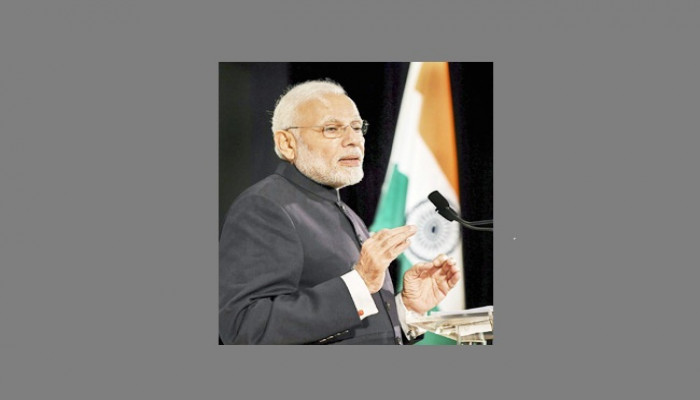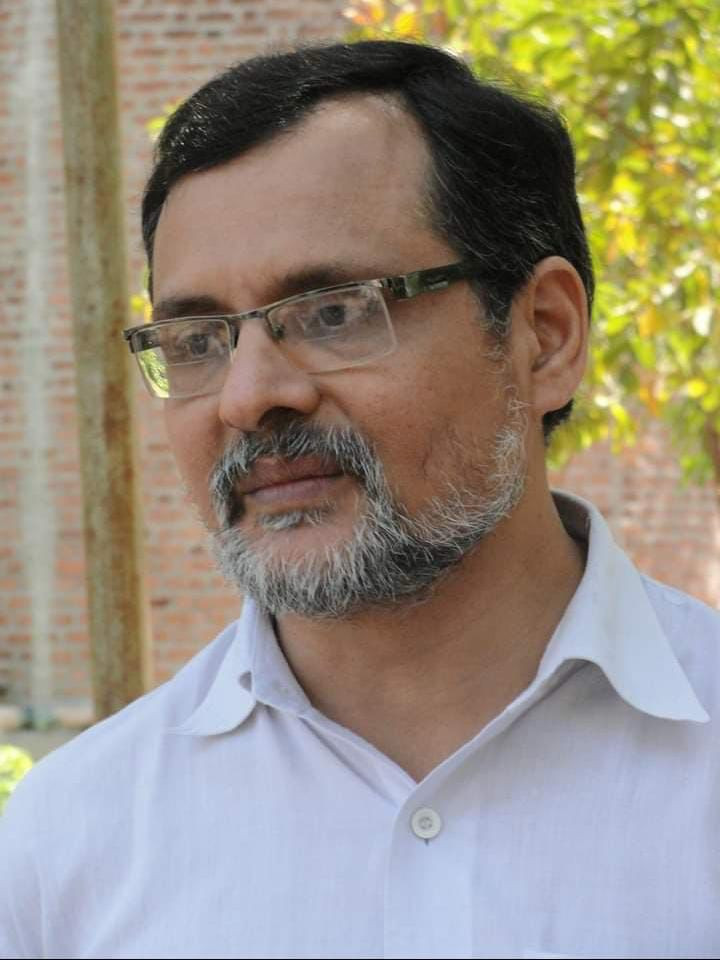India’s Strategic Foreign Policy Under Modi: Multi-Alignment, Strategic Hedging and Global Assertiveness
- In Foreign Policy
- 10:40 AM, Aug 07, 2025
- Viren S Doshi
India’s foreign policy under Prime Minister Narendra Modi has undergone a remarkable transformation over the past decade. In navigating an increasingly complex global order — defined by the dual challenges posed by a confrontational second-term President Donald Trump and an expansionist Chinese Communist Party (CCP)-occupied China, India has fortified its role as a sovereign, assertive and strategically autonomous power.
Through bold reforms, global partnerships, and calibrated diplomacy, India continues to pursue its national interest through a model of multi-alignment, strategic hedging, and resilience — avoiding entanglements in ideological alliances while strengthening connectivity across the Global South, the Indo-Pacific, West Asia, Eurasia, and beyond.
India's Core Strengths Fortified Under Modi’s Successive Governments
1. Economic Clout
India’s Gross Domestic Product (GDP) has reached $4.0 trillion as of 2025, surpassing Germany to become the fourth-largest economy globally. Economic growth has averaged 6.7% annually over the past five years, driven by structural reforms that include:
Introduction of the Goods and Services Tax (GST)
Expansion of Unified Payments Interface (UPI) and Open Network for Digital Commerce (ONDC)
Production-Linked Incentive (PLI) schemes in electronics, automobiles, green energy, and defence
2. Defence and Strategic Capability
India is now the third-largest defence spender globally, with an annual budget exceeding $83 billion. Key developments include:
Operationalisation of India’s indigenous aircraft carrier, INS Vikrant
Scaling up the Tejas Light Combat Aircraft program
Emphasis on self-reliant defence production (Atmanirbhar Bharat): AI-based warfare, drones, artillery and cybersecurity systems
3. Technological and Space Prowess
India has pioneered state-backed public digital infrastructure embraced by other developing nations. Meanwhile, the Indian Space Research Organisation (ISRO) leads global cost-efficient spaceflight, with Chandrayaan-3’s success followed by deep-space and commercial launch activity as well as a collaborative NISAR (NASA-ISRO Synthetic Aperture Radar) mission with the National Aeronautics and Space Administration (NASA). India’s 6G pilots and blockchain-based governance tools are leading standards in the Global South.
India’s Multi-Alignment Doctrine: Flexible Partnership Without Dependency
India’s foreign policy has evolved from Cold War-era non-alignment into modern multi-alignment — characterised by flexibility, issue-based coalitions, and sovereign autonomy. India now actively engages platforms like:
Quadrilateral Security Dialogue (QUAD) – with the United States, Japan, and Australia
Brazil, Russia, India, China, South Africa (BRICS+)
Shanghai Cooperation Organisation (SCO)
Trade Agreements with the United Arab Emirates (UAE), Australia, the United Kingdom (UK), the European Free Trade Association (EFTA), and ASEAN, as African countries
India tailors its relationships without falling into rival strategic camps.
The Strategic India–Russia Partnership: Resilience Amid Sanctions
Despite growing Western pressures, India’s relationship with Russia remains foundational and deeply strategic.
Trade: Bilateral trade crossed $60 billion, led by energy, military hardware, rare earths, and fertilisers
Defence: S-400 air defence systems, Akula-class submarines, 5th-generation fighter cooperation
Energy Security: Over 35% of India's crude oil is now sourced from Russia, at discounted rates, via rupee-ruble arrangements
Technology & Space: Joint ventures in satellite communications, next-generation navigation and semiconductors
This partnership offers India insulation from both CCP-occupied China’s militarism and Western leverage via conditional trade or sanctions.
Trump’s 50% Tariffs: India’s Measured Yet Firm Counterstrategy
Recently, President Trump’s administration escalated trade pressure, raising tariffs on Indian goods to a total of 50%, targeting:
Pharmaceuticals
Auto components
Gems and Jewellery
Textiles and garments
Leather goods and processed foods
This may affect up to $45 billion worth of exports from India, yet India’s calculated diplomacy has ensured:
No retaliation through counter-tariffs, avoiding escalation
Continued engagement on platforms like the Indo-Pacific Economic Framework (IPEF) and MALABAR naval exercises
Reduced dependency on the U.S. market via aggressive FTAs and outreach to new partners
The economic hit has been contained to below 0.2% of GDP, thanks to proactive diversification efforts and resilient service exports resting on a huge and increasing domestic consumption base.
India Cannot Be Bent — Trump Must Recalibrate
While trade tensions remain real, Trump’s own strategic logic — centred on an “America First” desire to counter CCP-occupied China and perceived leftist coalitions — may eventually lead to a softening of posture toward India.
Why?
The U.S. exports over $25 billion worth of goods and services to India annually
U.S.-bound investments in India totalled over $100 billion, focused on pharma, energy, and defence
India plays an indispensable role in Indo-Pacific balancing, joint infrastructure, critical tech supply chains and maritime operations.
As Trump confronts the CCP–Leftist–Jihadi nexus in his geopolitical framing, India will increasingly be seen not as a rival—but as a foundational partner of a secure and democratic order.
Expanding the Strategic Web: Middle East, Global South & IMEC
West Asia & Corridor Diplomacy
India has built a trilateral innovation–security–technology framework with the UAE and Israel, supported by:
The India–Middle East–Europe Economic Corridor (IMEC)
Counter-BRI (Belt and Road Initiative) infrastructure in the Arabian Sea and Eastern Mediterranean
South–South Solidarity
India is the lead voice of the Global South via platforms like:
Voice of Global South Summits
African Union–India Technology and Agritech Corridors
South America–India Pharma and Digital Cooperation Zones
Handling CCP-Occupied China: Asymmetry With Resolve
India stands firm against the threat posed by CCP-occupied China using asymmetric balancing:
Borders and Deterrence
Over 60,000 troops deployed in Ladakh and Arunachal Pradesh
All-weather roads, tunnel projects, and UAVs deter cross-border PLA pressure
Maritime Coalitions
Base access and logistics agreements with Japan, Australia, France, and the Philippines
QUAD naval exercises (MALABAR) enforce freedom of navigation
Tech Decoupling
Over 300 Chinese Communist Party occupied China-linked apps banned
Major telecom infrastructure contracts stripped from CCP-occupied China's vendors
Estimated loss to CCP-occupied China's tech companies: $5 billion annually
India demonstrates that assertive resilience, not appeasement, is the key to managing Beijing.
Conclusion: Rising India in a Multipolar Global Order
India has emerged from a decade of geopolitical upheaval more confident, more connected, and significantly more autonomous. Under Prime Minister Modi’s leadership, India has:
Climbed to the 4th-largest global economy
Avoided entrapment in great-power rivalry
Built one of the world’s most diversified networks of strategic alliances
Whether pushed by Trump’s 50% tariffs or tested on the high Himalayas by CCP-occupied China, India has not bent.
Instead, it has demonstrated a self-assured foreign policy based on multi-alignment, economic nationalism, and strategic pragmatism.
As the world’s balance of power evolves, India stands poised to play a stabilising role — not as a dependent ally, but as a defining force in shaping a secure, multipolar, and democratic world order.
Disclaimer: The opinions expressed within this article are the personal opinions of the author. MyIndMakers is not responsible for the accuracy, completeness, suitability, or validity of any information on this article. All information is provided on an as-is basis. The information, facts or opinions appearing in the article do not reflect the views of MyindMakers and it does not assume any responsibility or liability for the same.







Comments